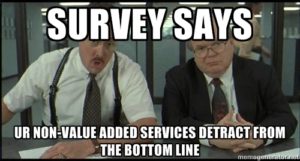 The project I’m working on is perfect. I have the all the money, resources and time I need to be successful. The stakeholders are really engaged, the success criteria is clear and we are moving along on the project timeline exactly as we originally defined it.
The project I’m working on is perfect. I have the all the money, resources and time I need to be successful. The stakeholders are really engaged, the success criteria is clear and we are moving along on the project timeline exactly as we originally defined it.
Yes, that was a lovely dream. Unfortunately, we all know that most projects don’t go like this. I was working on a project that should have been a quick implementation, but immediately after the kickoff it became apparent that the scope defined in the sales process didn’t align to the requirements of business stakeholders. This made for some interesting project discussions. A couple of weeks in, just as the project was on the brink of derailing, we were able to have a very honest discussion and reset the project expectations.
This was a necessary step in making this project successful. There was definitely a miss in the early scoping process, but as a result of the communication among the business stakeholders and the project team, these issues were identified early. It also helped that this was a case where we didn’t lose any time working on unnecessary components. All the work that had been done before the project reset was still a valuable contribution to the project. Too often, project teams are hesitant to have these very honest conversations. Instead, time is wasted dancing around the problem, or implementing solutions that don’t meet customer needs.
To enable recovery from a project that is going awry, you need
- Business stakeholders who are involved and advocate for their needs from the beginning
- Project manager and leadership that is open & honest about the existing scope
- An entire project team who (project implementation team, decision makers, business stakeholders) want the project to be successful and are willing to re-evaluate and reset the project scope and timelines accordingly.


 Engagement is not passively granted, but rather actively earned. As part of the project implementation, there needs to be special consideration given to figuring out how to keep users involved & engaged. Here are 3 options for continuing the conversation with the user community:
Engagement is not passively granted, but rather actively earned. As part of the project implementation, there needs to be special consideration given to figuring out how to keep users involved & engaged. Here are 3 options for continuing the conversation with the user community:




